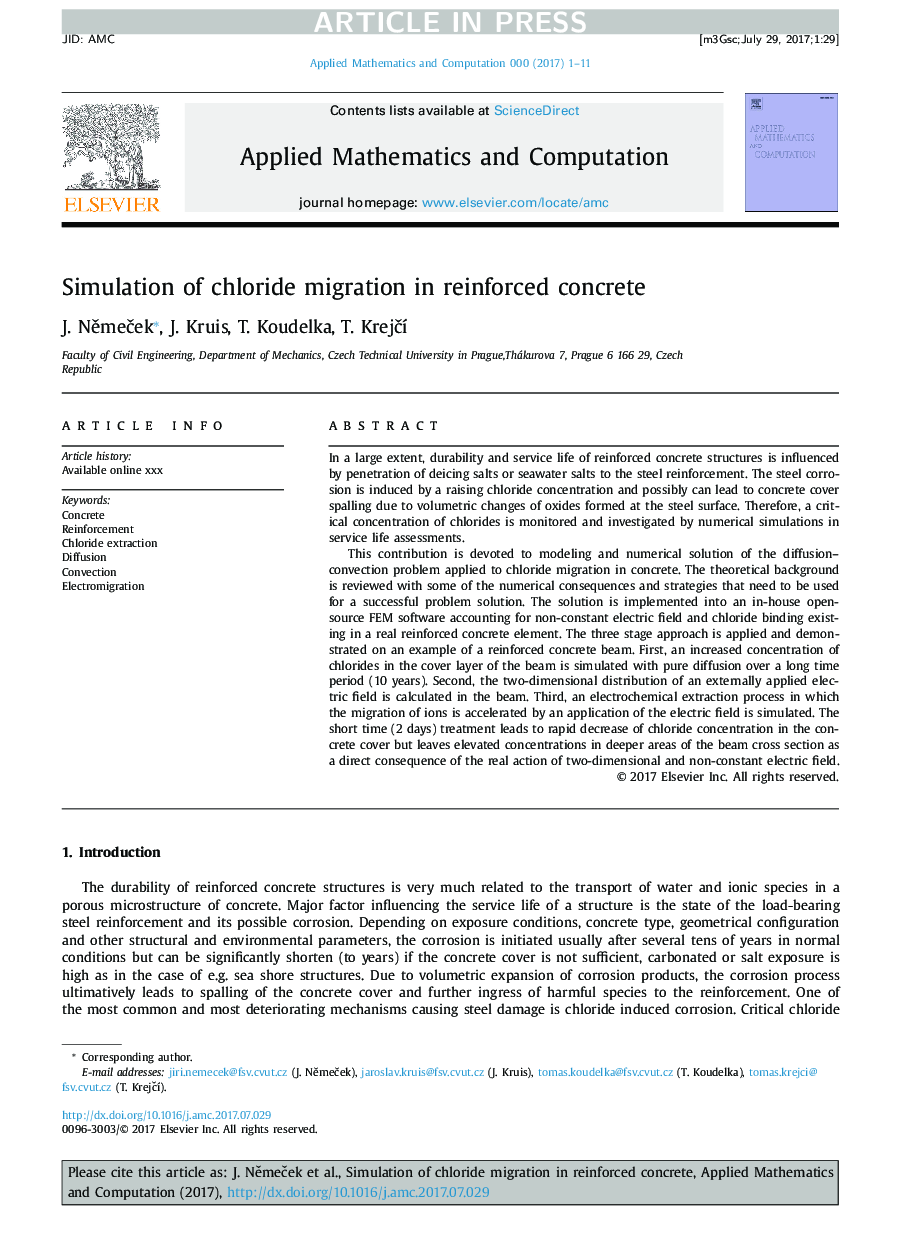| Article ID | Journal | Published Year | Pages | File Type |
|---|---|---|---|---|
| 8901571 | Applied Mathematics and Computation | 2018 | 11 Pages |
Abstract
This contribution is devoted to modeling and numerical solution of the diffusion-convection problem applied to chloride migration in concrete. The theoretical background is reviewed with some of the numerical consequences and strategies that need to be used for a successful problem solution. The solution is implemented into an in-house open-source FEM software accounting for non-constant electric field and chloride binding existing in a real reinforced concrete element. The three stage approach is applied and demonstrated on an example of a reinforced concrete beam. First, an increased concentration of chlorides in the cover layer of the beam is simulated with pure diffusion over a long time period (10 years). Second, the two-dimensional distribution of an externally applied electric field is calculated in the beam. Third, an electrochemical extraction process in which the migration of ions is accelerated by an application of the electric field is simulated. The short time (2 days) treatment leads to rapid decrease of chloride concentration in the concrete cover but leaves elevated concentrations in deeper areas of the beam cross section as a direct consequence of the real action of two-dimensional and non-constant electric field.
Related Topics
Physical Sciences and Engineering
Mathematics
Applied Mathematics
Authors
J. NÄmeÄek, J. Kruis, T. Koudelka, T. KrejÄÃ,
